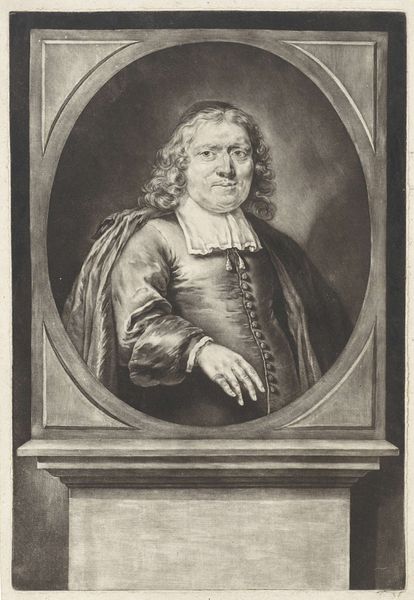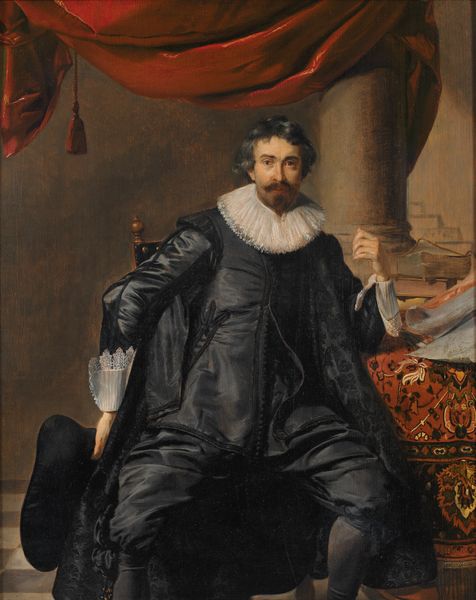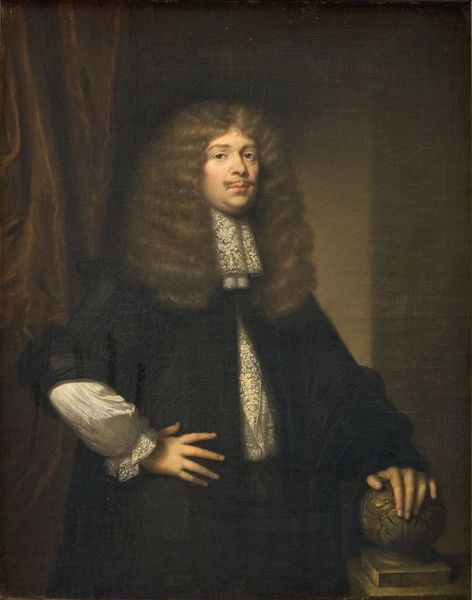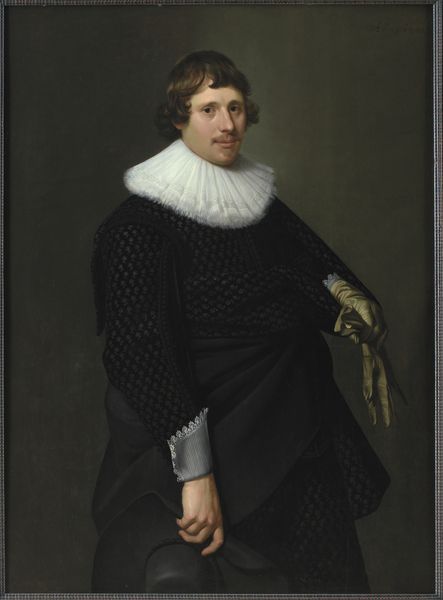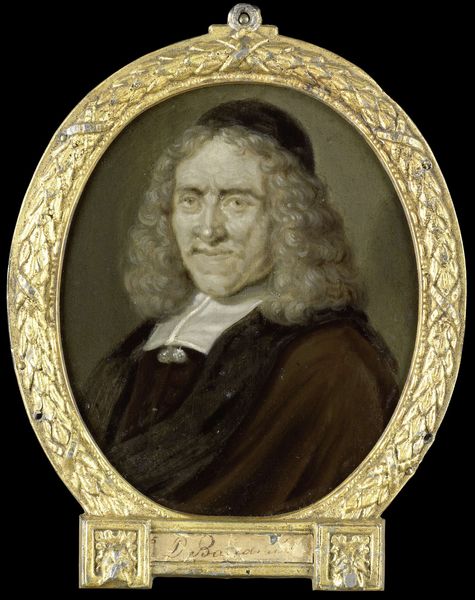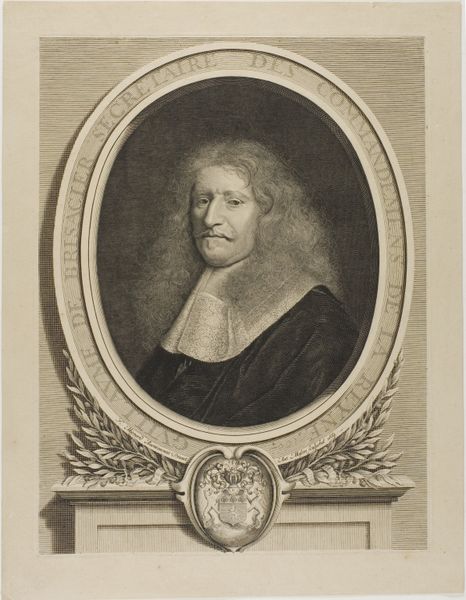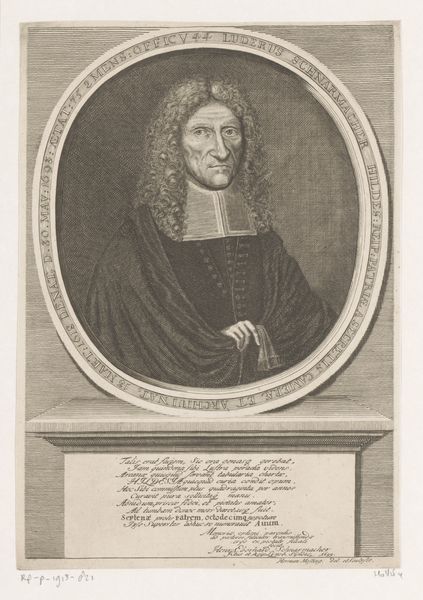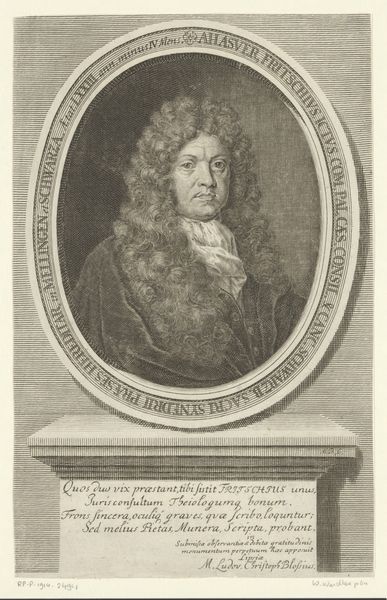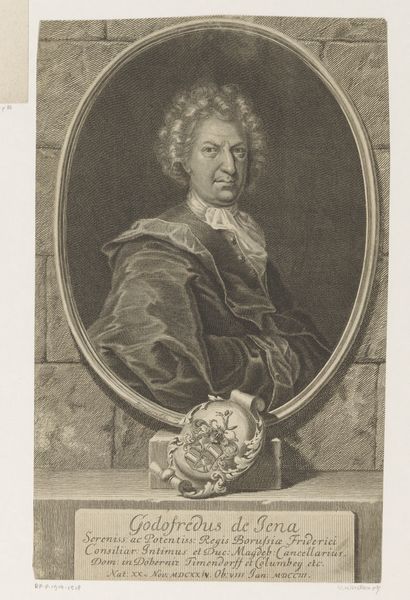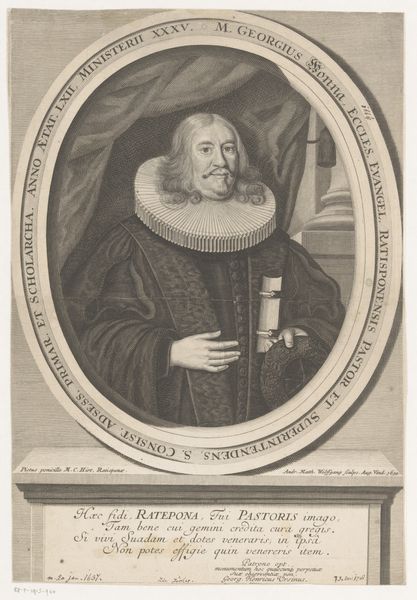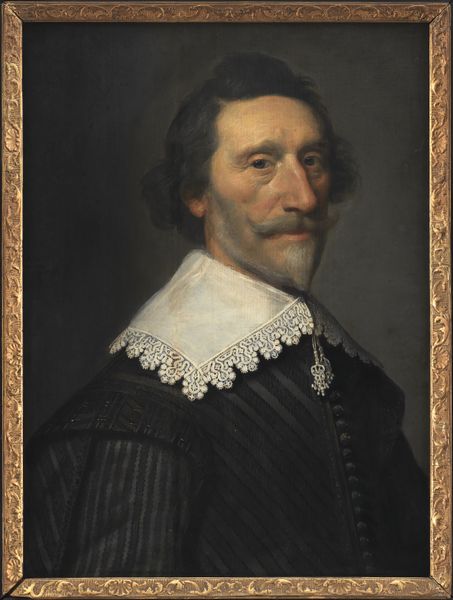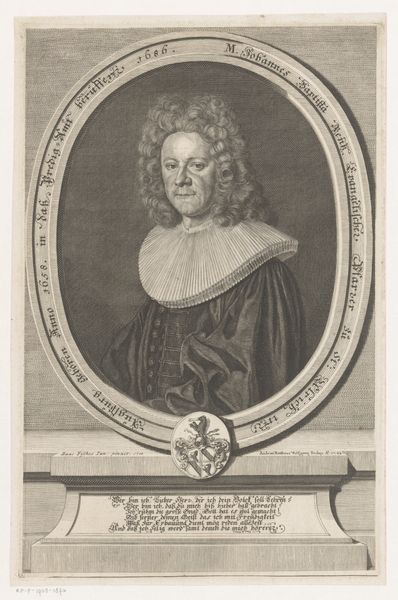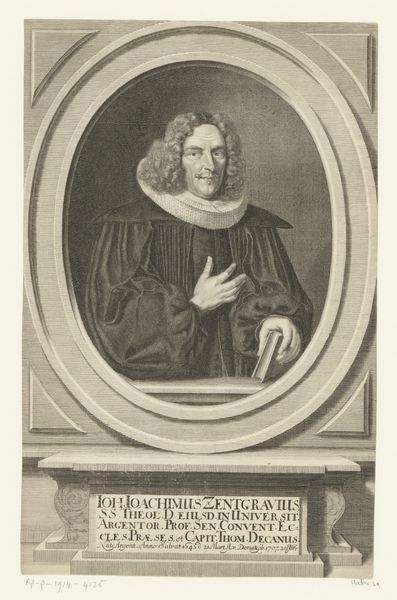
Portrait of Pieter Corneliszoon Hooft, Bailiff of Muiden, Historian and Poet 1630 - 1700
0:00
0:00
painting, oil-paint
#
portrait
#
baroque
#
painting
#
oil-paint
Dimensions: height 27 cm, width 22.5 cm
Copyright: Rijks Museum: Open Domain
Curator: Joachim von Sandrart painted this portrait of Pieter Corneliszoon Hooft sometime between 1630 and 1700. You can find it hanging in the Rijksmuseum. What strikes you first about it? Editor: The darkness, definitely the darkness! It feels like a secret revealed slowly, you know? The little bits of light make it feel very intimate, almost like catching him unawares. But, tell me, how did someone even become a “bailiff”? Was it like running for office, or more of an inherited gig? Curator: Well, Hooft wasn’t just any bailiff, he was also a noted historian and poet, part of the Muiderkring literary circle. Knowing that, it makes me wonder about the weight of words, of stories, captured in the almost hushed atmosphere. Editor: Ah, the hushed atmosphere is clearly working overtime to conceal the oil paint and the labor needed to bring it to this…stasis. I’m wondering about Sandrart's studio, and the assistants grinding pigments. How many layers of glaze do you think built up that subtle light? Curator: Oh, I love that perspective! You're pulling back the curtain on the raw, earthy creation of something seemingly ethereal. For me, it’s the face that really draws me in. The slightly weary, intelligent eyes. I see a man wrestling with history, with ideas, with his own mortality, perhaps. There's such depth in his gaze. Editor: Sure, depth… in the application of the medium. I see wealth in the lace and in having time and money to commission an artist in the first place, and those are all material conditions. The man is more likely wrestling with what he can afford to spend, not some inner turmoil. Curator: (Laughing) Okay, okay, fair point. Wealth definitely permeates. Yet, isn't that also part of the human condition? Our earthly burdens, as well as our aspirations, woven together? Editor: Yes! It’s those material ties –the brushes used, the specific qualities of pigment that define color back then– that truly define the image and provide insights that a quick read into the gaze just simply can't achieve! Curator: Perhaps the true genius lies in how Sandrart melded the tangible and the intangible then? Creating a window, both onto a specific person and onto the bigger questions of their world. Editor: Ultimately, an image created by someone whose job was also tied to these same socioeconomic factors…fascinating how those textures all collide!
Comments
No comments
Be the first to comment and join the conversation on the ultimate creative platform.

